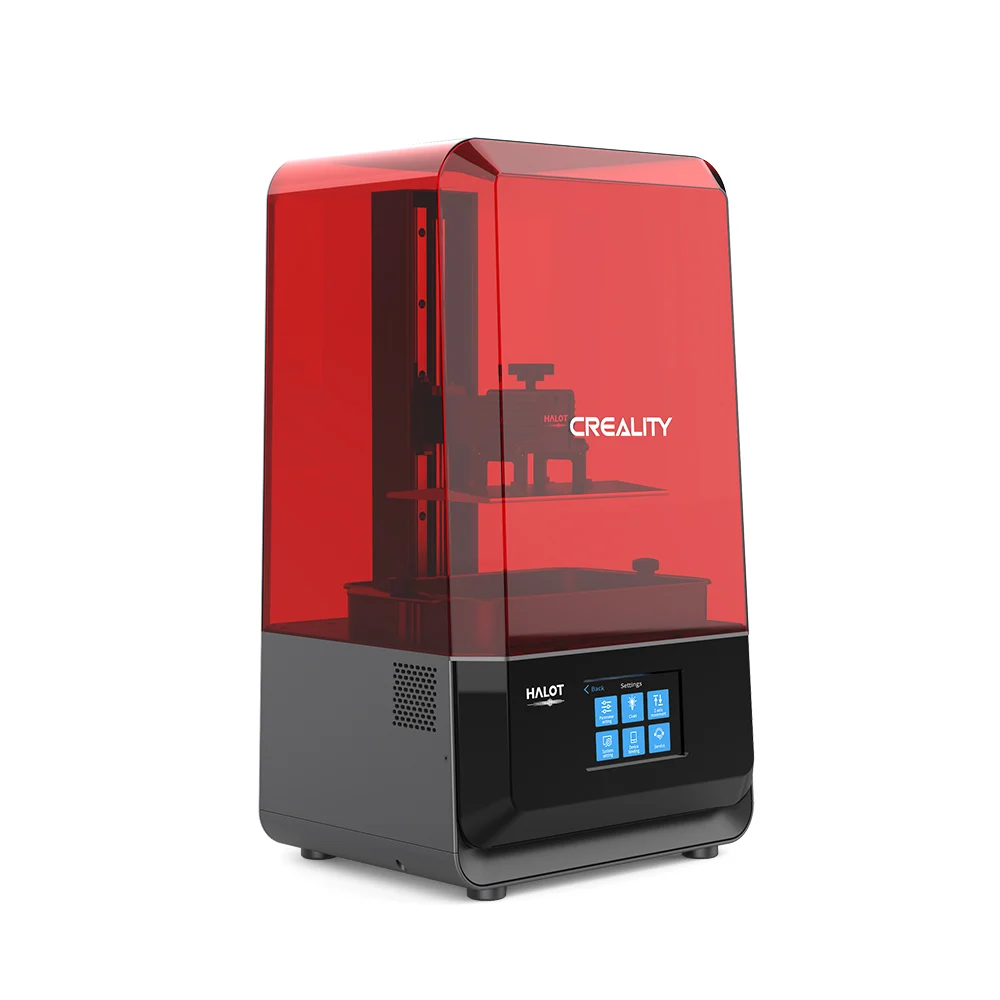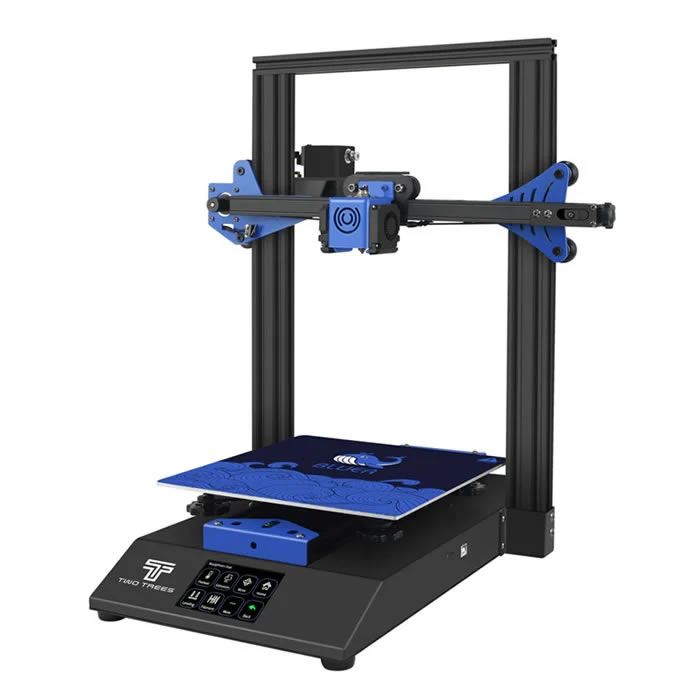Compare Halot Lite vs Bluer
Comparison between the best 3D printers
Choose the best 3D printer at the best price. The cheapest 3D printers are here.
Buy a 3D printer here with 3D Fila.
 |
 |
|
| Model | Halot Lite |
Bluer |
| Printing Material | Resin | Filament |
| Buy Resin for Creality 3D Halot Lite | Buy Filament forTwoTrees Bluer | |
| Estimated price | $400,00 | $169,00 |
| Manufacturer | Creality 3D | TwoTrees |
| Release Year | 2021 | 2019 |
| Print Volume [mm] | 192x120x200 | 230x230x280 |
| Printer Size [mm] | 330x301x572 | 400x410x520 |
| Weight [kg] | 10,6 | 8 |
| Power Loss Recovery | NO | YES |
| Maximum Resolution [mm] | 0,01 | 0,1 |
| Processor | MKS Robin Nano V1.2 + TMC2208 | |
| Display | Display touchscreen 5'' | Touchscreen TFT 3,5'' |
| Power Supply | 240W | |
| Connectivity | SD / USB | SD / USB |
| Operating systems | Windows, Mac, Linux | Windows, Mac, Linux |
| Date of registration in the system | 2022-11-04 | 2021-09-20 |
| Release date | 2021 | 2019 |
| Extra features | Crealitys Halot Lite printer stands out in the mid-size resin 3D printing segment, with a build volume of 192 x 120 x 200 mm and 50 micron resolution. It offers a monochrome LCD for fast and durable printing, and an upgraded light source that ensures over 80% uniformity across the print bed. It includes Wi-Fi connectivity for remote control and updates, an ARM Cortex CPU for efficient performance, and is compatible with Halot Box and Lychee slicing software. It also has an activated carbon filter to reduce odors. | The Bluer offers interesting features such as automatic bed leveling, a 3.5-inch color touchscreen for easy operation, and a filament sensor to prevent print failures. It has a robust metal extruder and a generous 230 x 230 x 280 mm print volume, suitable for a variety of projects. The community mentions improvements made by Two Trees based on feedback, increasing its reliability. |
| Support for multiple colors and materials (AMS and CFS) | NO | NO |
Notes * |
||
| Cost-benefit | 8 / 10 | 7 / 10 |
| Hardware | 1.2 / 10 | 2 / 10 |
| Tela | . | . |
| Print volume | 3 / 10 | 3 / 10 |
| Performance | 9 / 10 | 2 / 10 |
Conclusion |
| In conclusion, when comparing the Creality 3D Halot Lite and the TwoTrees Bluer 3D printers, several critical factors emerge that can help prospective buyers make an informed decision. The Halot Lite, while priced higher, offers superior print resolution and performance, making it ideal for those who prioritize quality and detail in their prints. Its monochrome LCD and advanced light source enhance efficiency and print uniformity, which is essential for more intricate designs. Furthermore, the presence of features like a carbon filter for odor reduction and Wi-Fi connectivity for remote operations reflect a modern touch that may appeal to tech-savvy users. On the other hand, the Bluer stands out with its larger print volume and more affordable price point, catering to users who need flexibility in project size without a significant investment. It includes practical features such as automatic bed leveling and a filament sensor, contributing to a more user-friendly experience, especially for beginners in 3D printing. While it may lag behind in terms of print quality and performance, it still serves well for basic printing tasks and is often seen as a reliable choice. Ultimately, the best choice between these two printers will depend on individual needs: those focused on detailed, high-quality prints with advanced features may find more value in the Halot Lite, while users seeking a cost-effective solution with good functionality might prefer the Bluer. Both printers have their unique strengths, making them suitable for different types of users within the 3D printing community. |

